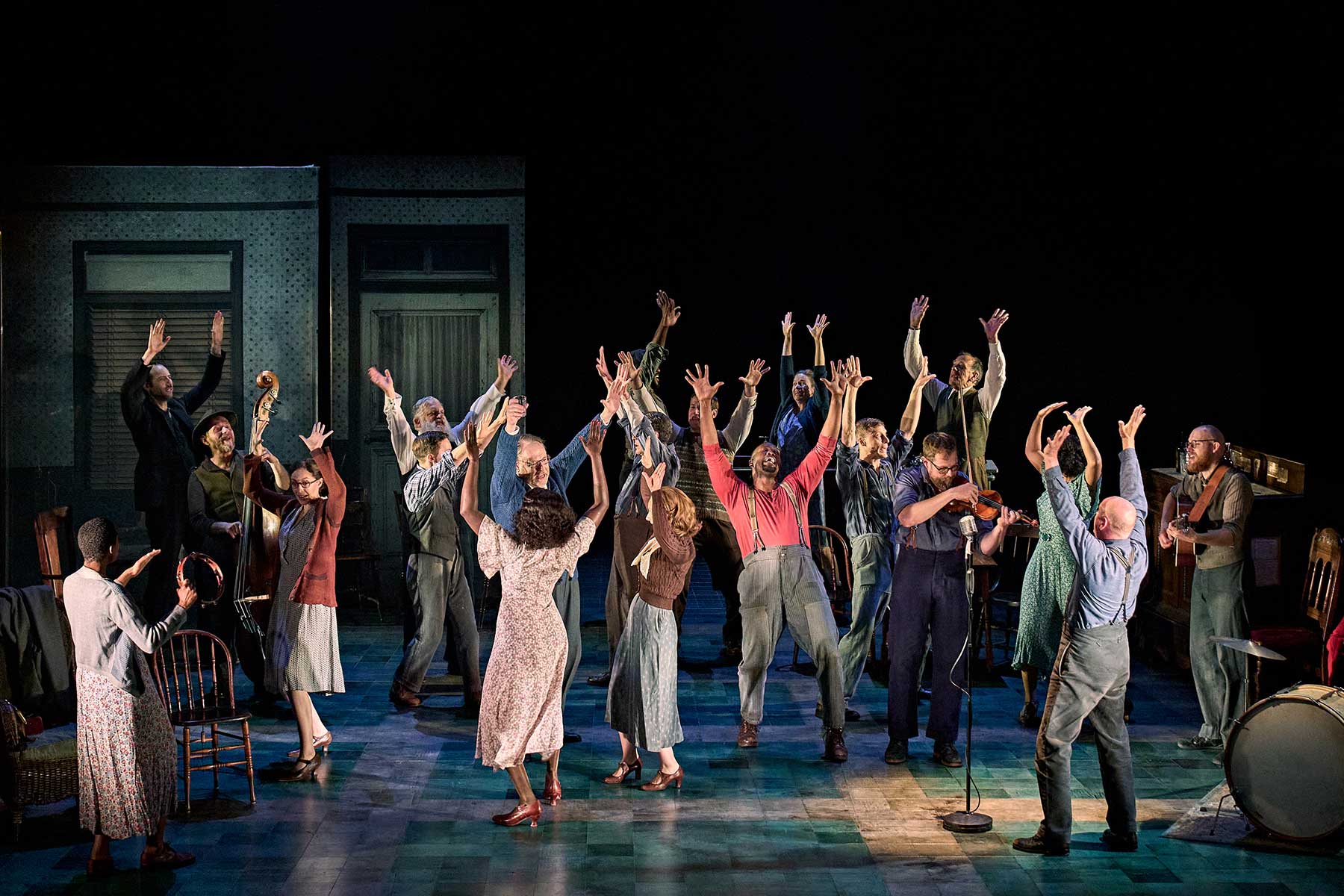
Writer Conor McPherson deserves credit for his ambitious attempt to weave Bob Dylan’s back catalogue into a compelling theatrical experience, steering clear of the typical jukebox musical format where familiar songs are awkwardly forced into the storyline. However, while Girl From The North Country contains moments of genuine tenderness and beauty, the production ultimately falls short of its full potential.
Girl From the North Country is set in a rundown guesthouse in Duluth, Minnesota in 1934, during the height of the Great Depression. The establishment is run by Nick Laine (Colin Connor) and his wife Elizabeth (Katie Brayben), who is living with dementia. With the bank threatening foreclosure due to unpaid debts, the family faces mounting pressure. Nick and Elizabeth have two children: Gene (Colin Bates), a struggling writer with a growing dependency on alcohol, and Marianne, their adopted 19-year-old daughter who is pregnant and keeping the identity of the father a secret. The family is white, while Marianne is Black which adds another layer of complexity to the issues the family have to deal with.
The guesthouse is home to a rotating cast of characters, each burdened by financial struggles, heartbreak, or hidden secrets. Among them is the widowed Mrs Neilsen (Maria Omakinwa), who is entangled in a legal battle over her late husband’s estate while carrying on an affair with Nick. Joe Scott (Sifiso Mazibuko), a former boxer, arrives alongside Reverend Marlowe (Eugene McCoy), a slippery Bible salesman with dubious intentions. Joe, though still technically married, is attracted to Marianne, a connection that adds further emotional complexity to the house. Also staying at the guesthouse is the Burke family, whose son has a learning disability. Mr Burke has recently lost his business, adding yet another layer of hardship to an already fragile environment.
Conor McPherson’s writing reveals both ambition and limitation. He populates the stage with a wide array of characters, each grappling with their own struggles of financial hardship, personal loss, or faded dreams. However, the sheer volume of subplots leaves little room for depth and many storylines feel underdeveloped. As a result, the play unfolds in a series of fragmented episodes rather than as a unified narrative. Songs, though beautifully performed, often feel disconnected from the dramatic action and feel more like pauses for musical reflection than natural extensions of character or plot. The effect is a production that leans toward being a concert with theatrical elements than a fully integrated piece of musical theatre.
McPherson’s direction is notably restrained, avoiding the grand gestures and elaborate dance routines typical of many musicals. Instead, the staging feels grounded, with a carefully measured pace that allows the songs to emerge naturally and resonate with the audience. Though the stories are steeped in hardship and sorrow, the production never lapses into melodrama. Moments of quiet humour are woven in with care, preventing the tone from tipping into sentimentality.
The acting across the entire cast is uniformly strong, with each performer bringing nuance and individuality to roles that could easily have fallen into stereotype: the woman with dementia, the pregnant teenager and the grieving widow. Instead, these characters are portrayed with warmth, restraint, and emotional depth. Especially striking are the vocal performances and each actor navigates Bob Dylan’s diverse songbook with remarkable control and sensitivity.
The musical arrangements are Inventive and atmospheric and they breathe new life into Dylan’s familiar lyrics. More than once, a character would begin singing and only halfway through would I recognise the song because the tempo, instrumentation, and vocal delivery had been so thoroughly reimagined that it felt like a fresh composition. These transformations aren’t just stylistic flourishes but are carefully crafted to reflect each character’s emotional state and to amplify the mood of the scene.
Girl From The North Country succeeds as an atmospheric reflection on hardship and hope, capturing the mood of the Great Depression. The production offers moments of genuine beauty and emotional resonance, showcasing Dylan’s songbook in imaginative and often hauntingly effective ways. Yet, for all its individual strengths of strong performances, inventive arrangements and evocative design, the play ultimately feels more like a concert punctuated by dramatic scenes than a fully integrated theatrical experience.
NEED TO KNOW: Girl From the North Country is at the Old Vic until 23 August

























